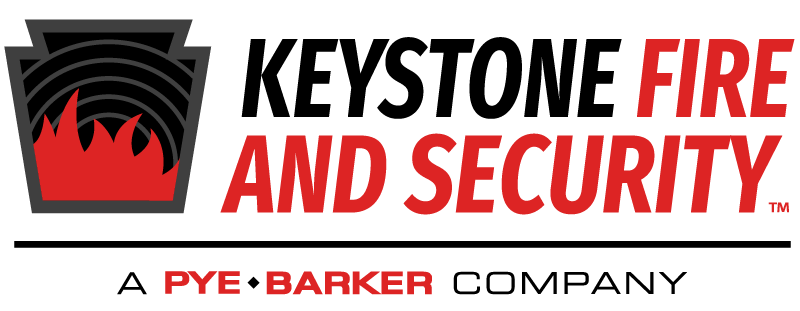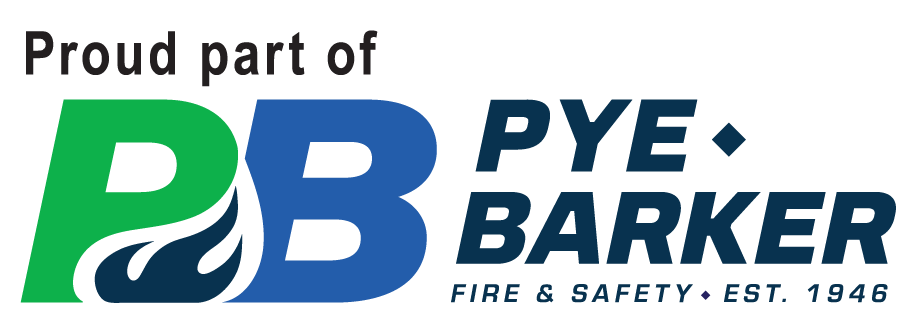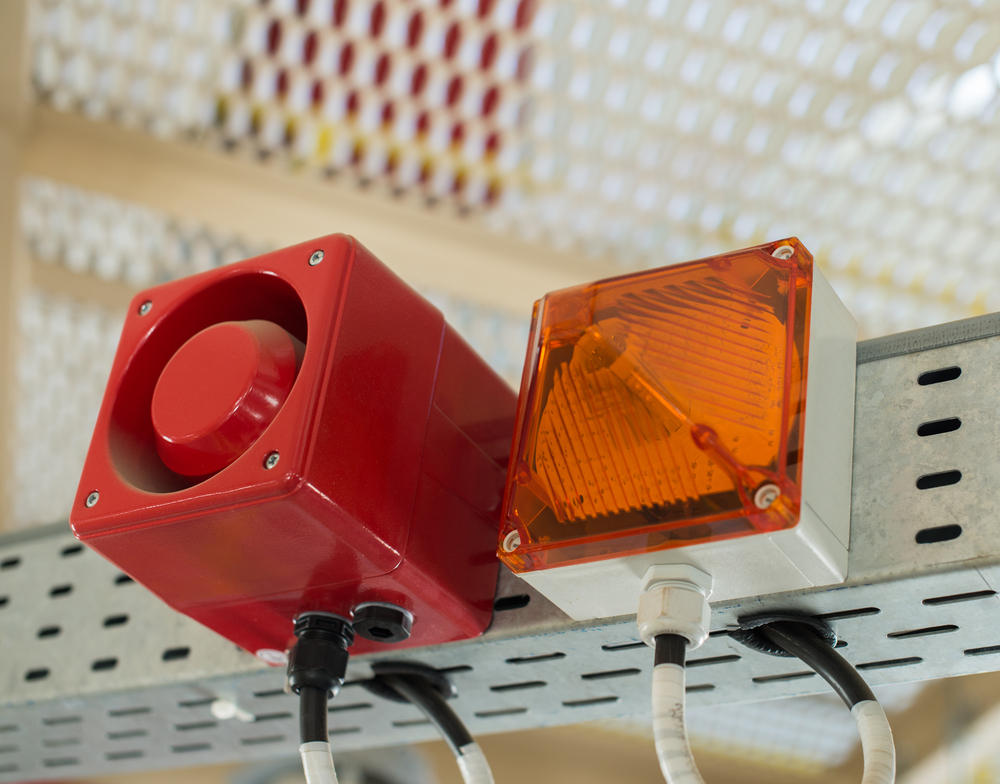Emergencies can happen at any time, and when they do, every second counts. Whether it’s a fire, severe weather, a security threat, or another crisis, fast and clear communication can make all the difference in keeping people safe. That’s where mass notification systems come in. These advanced AV and communication tools are transforming emergency response plans for businesses, schools, healthcare facilities, and organizations of all sizes.
At Keystone Fire and Security, we know just how important these systems are for protecting lives and property. Whether it’s something as simple as intercom systems in Northampton County, PA or wide-reaching emergency alerts within a given space, the critical nature of having these tools at your disposal can’t be quantified. Let’s explore how mass notification systems work, why they matter, and how they fit into a modern emergency response strategy.
What Is a Mass Notification System?
A mass notification system (MNS) is a platform designed to quickly send important alerts and instructions to large groups of people during emergencies. These systems use a variety of communication channels, such as text messages, emails, phone calls, mobile apps, digital signage, and public address systems, to ensure that everyone receives the message, no matter where they are or what device they’re using.
The main goal is simple: get the right information to the right people as fast as possible, so they can take action and stay safe.
Why Mass Notification Systems Are Essential
In an emergency, confusion and delays can be dangerous. Mass notification systems help eliminate these problems by centralizing and streamlining communication.
Here’s why they’re so valuable:
- Speed: These systems deliver alerts instantly, reaching hundreds or thousands of people in seconds.
- Clarity: Messages are clear, consistent, and can include specific instructions, reducing panic and uncertainty.
- Reach: By using multiple channels, mass notification systems ensure that everyone receives the message, even if they’re away from their desk or outside the building.
- Automation: Pre-set templates and automated triggers help eliminate human error and speed up the response.
- Accountability: Many systems track who received and acknowledged the alert, helping emergency teams know who is safe and who may need help.
How Mass Notification Systems Work
When an emergency occurs, time is of the essence. Mass notification systems are designed to get the word out quickly and efficiently.
Here’s how a typical system works:
- Detection or Trigger: An emergency is detected, either by a person (like a safety officer) or automatically (such as a fire alarm or security sensor).
- Message Creation: Administrators use pre-set templates or compose a custom message with details and instructions.
- Multi-Channel Delivery: The system sends the alert through all selected channels at once—text, email, phone, digital signage, and more.
- Recipient Action: People receive the message on their devices and follow the instructions, whether it’s evacuating, sheltering in place, or taking other safety measures.
- Feedback and Reporting: The system tracks who received and responded to the alert, giving emergency teams real-time information for better decision-making.
Real-World Examples and Use Cases
Mass notification systems are used in a wide range of settings to keep people safe.
Here are just a few examples:
- Schools and Universities: Quickly alert students and staff about lockdowns, severe weather, or fire drills.
- Healthcare Facilities: Notify staff about medical emergencies, evacuations, or security threats.
- Corporate Offices: Communicate building evacuations, IT outages, or safety instructions during an emergency.
- Industrial Sites: Alert workers to chemical spills, equipment failures, or other hazards.
- Public Venues: Guide crowds during severe weather or security incidents.
In each case, the ability to send clear, timely instructions helps prevent injuries, save lives, and minimize property damage.
Integration with Fire Alarms and Security Systems
One of the biggest advantages of modern mass notification systems is their ability to integrate with other safety technologies. For example, Keystone Fire and Security is a fire alarm company near Newark, DE which specializes in the integration of mass notification systems with fire alarms, access control, and security cameras.
This integration means:
- When a fire alarm goes off, the mass notification system can automatically send evacuation instructions to everyone in the building.
- If a security breach is detected, alerts can be sent instantly to staff and first responders.
- Real-time updates can be displayed on digital signage, mobile apps, and other platforms, keeping everyone informed as the situation evolves.
This seamless integration ensures a coordinated response and reduces the chance of missed or delayed communication.
The Benefits of Mass Notification Systems
The distinct advantages offered by mass notification systems are limitless. Let’s break down a few of the key benefits that make mass notification systems a must-have for modern emergency response plans:
1. Faster Response Times
Speed is critical during emergencies. Mass notification systems allow organizations to send alerts within seconds, giving people more time to react and stay safe.
2. Consistent and Clear Communication
Having pre-set templates and automated messages ensures that everyone receives the same information, reducing confusion and panic.
3. Reaching Everyone, Everywhere
With multi-channel delivery, you can reach people whether they’re in the building, working remotely, or even offsite.
4. Improved Accountability
Tracking who received and acknowledged messages helps emergency teams know who is safe and who may need assistance.
5. Regulatory Compliance
Many industries are required by law to have effective emergency communication plans. Mass notification systems help meet these requirements and demonstrate a commitment to safety.
6. Business Continuity
By communicating quickly and clearly, organizations can minimize disruptions, protect assets, and recover faster after an incident.
How Mass Notification Systems Support Emergency Plans
A mass notification system is not just a technology upgrade. It’s a vital part of a comprehensive emergency response plan.
Here’s how it fits in:
- Preparedness: Regular drills and training help staff know what to do when they receive an alert.
- Customization: Messages can be tailored to different scenarios, such as fire, severe weather, or security threats.
- Post-Incident Review: Systems provide data and reports that help organizations review what worked, what didn’t, and how to improve for next time.
- Routine Communication: These systems can also be used for non-emergency updates, like policy changes or event reminders, keeping everyone connected and informed.
Why Choose Keystone Fire and Security for Mass Notification?
At Keystone Fire and Security, we specialize in designing and installing mass notification systems that fit the unique needs of each client. Our team understands the critical role these systems play in protecting people and property.
We offer:
- Expert Consultation: We assess your facility and recommend the best solutions for your needs.
- Seamless Integration: Our systems work with your existing fire alarms, security, and AV systems for a unified response.
- Reliable Technology: We use industry-leading products that are tested and proven for performance and reliability.
- Ongoing Support: From training to maintenance, we’re here to make sure your system is always ready when you need it.
Making Sure Your Voice Is Heard
Emergencies are unpredictable, but your response doesn’t have to be. With a modern mass notification system in place, you can keep your people safe, protect your assets, and meet your legal obligations. These systems deliver fast, clear, and reliable communication when it matters most.
If you’re ready to strengthen your emergency response plan with a mass notification system, consult Keystone Fire and Security today. Our team is here to help you choose the right solution, integrate it with your existing safety systems, and ensure your organization is prepared for whatever comes your way. With the right tools and support, you can face emergencies with confidence and keep your community safe.


